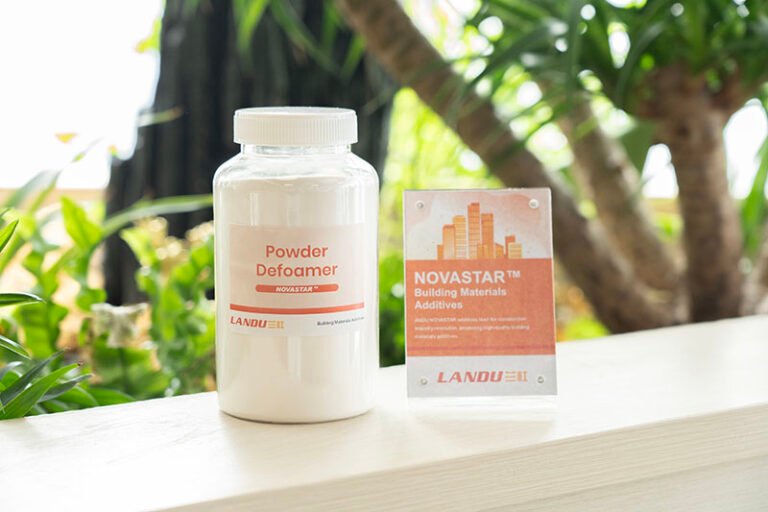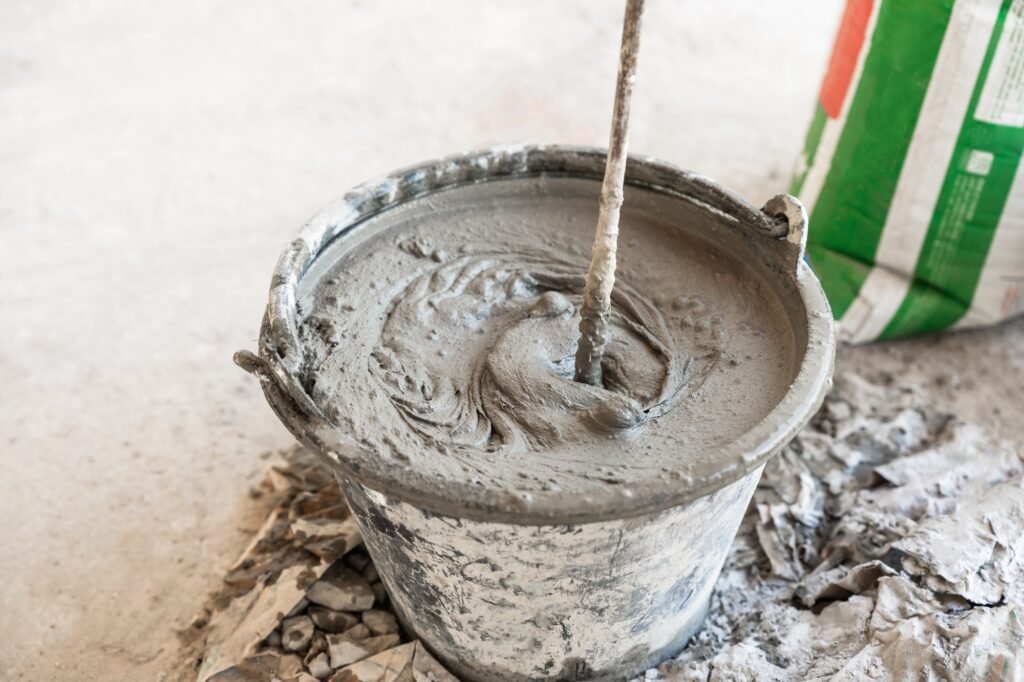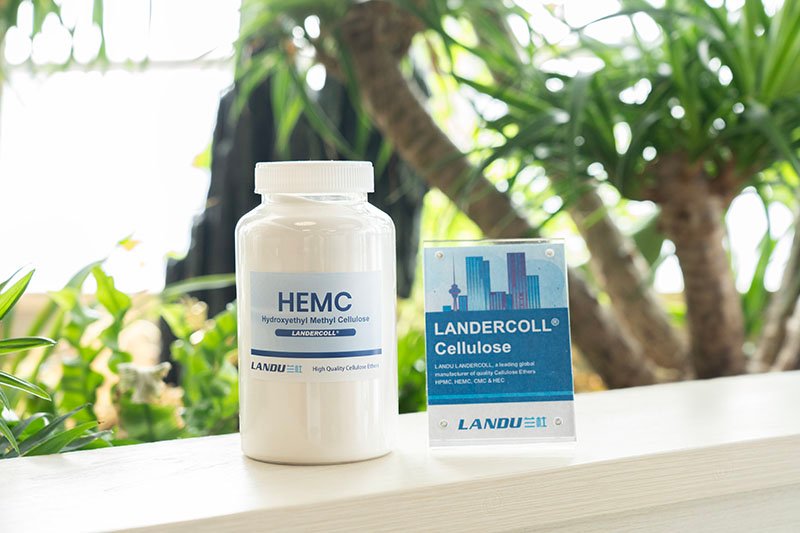
In cementitious and gypsum-based building materials, small improvements in water retention, rheology, and stability make the difference between strong, durable mortars and systems that fail under stress. Hydroxyethyl Methyl Cellulose (HEMC), a versatile cellulose ether, is central to these improvements.
At low dosages (0.1–0.6%), HEMC ensures better workability, extended open time, reduced sagging, and consistent application across climates. This whitepaper explains what HEMC is, how it functions, how to choose grades, how it interacts with other additives, and how to troubleshoot performance problems—supported by practical dosage guidelines, test methods, and starting formulations.
HEMC is a non-ionic cellulose ether derived from natural cellulose and chemically modified with methyl and hydroxyethyl groups. This dual substitution provides a unique balance between:
Water retention (like HPMC)
Temperature robustness (better than many HPMC grades)
Rheological control for ease of application
The degree of substitution and molecular weight determine the viscosity and performance profile of each HEMC grade.
Water retention → Prevents premature drying, ensures proper hydration.
Workability → Provides a creamy, trowel-friendly consistency.
Open time extension → Ensures strong tile adhesion and basecoat durability.
Cohesion and stability → Reduces segregation and bleeding, especially in lightweight or polymer-rich mortars.
HEMC is widely used in:
Cement tile adhesives (CTA, C1/C2 classes)
Cement and lime plasters, renders
AAC block adhesives and repair mortars
Gypsum machine plasters and joint compounds
Cementitious waterproofing slurries
Specialized self-leveling underlayments (SLUs)


HEMC dissolves in the mix water, forming a temporary film around binder particles and in pores. This slows water migration into substrates or evaporation, ensuring complete cement hydration and reducing early skinning.
HEMC provides a shear-thinning profile:
Under mixing or troweling → viscosity drops → easier workability.
At rest → viscosity rebuilds → mortar stays on the wall without sagging.
By holding water near polymer particles, HEMC allows sufficient time for coalescence, ensuring strong adhesive bonds in CTAs and ETICS basecoats.
Compared with HPMC, HEMC often shows better water retention at elevated temperatures, making it especially valuable in hot, dry climates (≥30°C, RH <50%).
Viscosity (1–2% solution, Brookfield): Higher viscosity = stronger anti-sag, longer open time.
Substitution balance: Methyl vs. hydroxyethyl ratio affects salt tolerance, water retention, and thermal stability.
Particle size: Fine powders hydrate quickly; coarse powders dissolve slower.
Surface treatment: Delayed-dissolution HEMC avoids lumping during dry-mix blending.
| Application | HEMC Dosage (%) | Notes |
|---|---|---|
| Cement Tile Adhesives (CTA) | 0.20–0.60% | Higher end for vertical walls / hot climates |
| Cement Renders/Plasters | 0.10–0.30% | Balance workability and pumpability |
| AAC Block Adhesives/Repair Mortars | 0.20–0.45% | Ensure water retention for hydration |
| Cementitious Waterproofing | 0.10–0.30% | Optimize film formation |
| Gypsum Plasters/Joint Compounds | 0.30–0.50% | Smooth finish, crack resistance |
| SLUs | 0.02–0.10% | Only low-viscosity grades suitable |
Redispersible Polymer Powders (RDP) → HEMC supports film formation; higher RDP may increase tack.
Starch Ethers → Enhance anti-slip and open time; use sparingly.
Defoamers → Essential for air control; test mineral oil vs. silicone types.
Set Modifiers → Check compatibility with retarders (citric acid, tartaric) and accelerators (Ca formate, Li carbonate).
Fillers → Sand gradation strongly influences water demand and rheology.
Cement: 30–35%
Sand (0–1 mm): 60–65%
HEMC: 0.30–0.45%
RDP: 1.0–2.0%
Defoamer: 0.05–0.10%
Cement: 28–32%
Sand (0–0.8 mm): 53–60%
Limestone filler: 5–10%
HEMC: 0.40–0.55%
RDP: 2.5–4.0%
Starch ether: 0.08–0.18%
Gypsum: 70–80%
Limestone/Perlite: 15–25%
HEMC: 0.35–0.50%
Retarder: 0.05–0.15%
Cement: 25–35%
Fine fillers: 35–45%
Sand (0–0.5 mm): 10–20%
HEMC: 0.02–0.06% (low viscosity)
Superplasticizer (PCE): 0.15–0.35%
Dry blending: Always mix HEMC with fillers before cement/gypsum.
Water demand: Adjust carefully; excess water weakens strength.
Maturation time: Rest 2–5 min after mixing → allows full hydration.
Site conditions: Pre-dampen porous substrates in hot/dry climates.
Bulk density & sieve residue → blending uniformity
Moisture content → prevent caking
Flow table spread / consistency
Water retention (filter paper test)
Slip resistance (vertical tiling test)
Pot life & open time evaluation
Adhesion strength (EN 12004, ASTM C482)
Flexibility/deformation (for S1/S2 mortars)
Shrinkage and crack resistance (plasters)
Sagging tiles → Increase viscosity grade; add starch ether.
Short open time → Use high-retention grade; increase dosage slightly.
Sticky trowel → Reduce HEMC or polymer content; consider accelerator.
Mixing lumps → Use surface-treated HEMC; adjust blending method.
Excess air/pinholes → Adjust defoamer or reduce mixer speed.
Handle as nuisance dust; wear PPE.
Store sealed and dry; avoid humidity ingress.
Check local SDS regulations for exposure and disposal guidelines.
HEMC contributes to sustainability by:
Reducing rework → better water retention, fewer failures.
Material efficiency → enables thinner, uniform layers.
Lower embodied CO₂ → supports cement replacement with SCMs (fly ash, slag, limestone).
Q1: HEMC vs. HPMC?
Both are non-ionic cellulose ethers. HEMC generally outperforms in hot climates, while HPMC may feel crisper in application. Many formulations use blends.
Q2: Can I replace HEMC with extra water?
No—extra water lowers adhesion and strength. HEMC improves workability without compromising performance.
Q3: My sand is inconsistent—what should I do?
Recalibrate water and HEMC dosage. Use tighter sand gradation for stable results.
HEMC is more than a thickener—it is a multifunctional performance enhancer in modern cementitious and gypsum mortars. By selecting the right grade and dosage, formulators can achieve:
Stronger water retention
Consistent workability
Extended open time
Superior adhesion and durability
👉 To identify the optimal HEMC grade for your system, share details on:
Binder type (cement/gypsum)
Climate conditions
Application method (manual/machine)
Performance targets (open time, slip, adhesion class)
Our technical team can recommend tailored solutions that balance performance, cost, and sustainability.